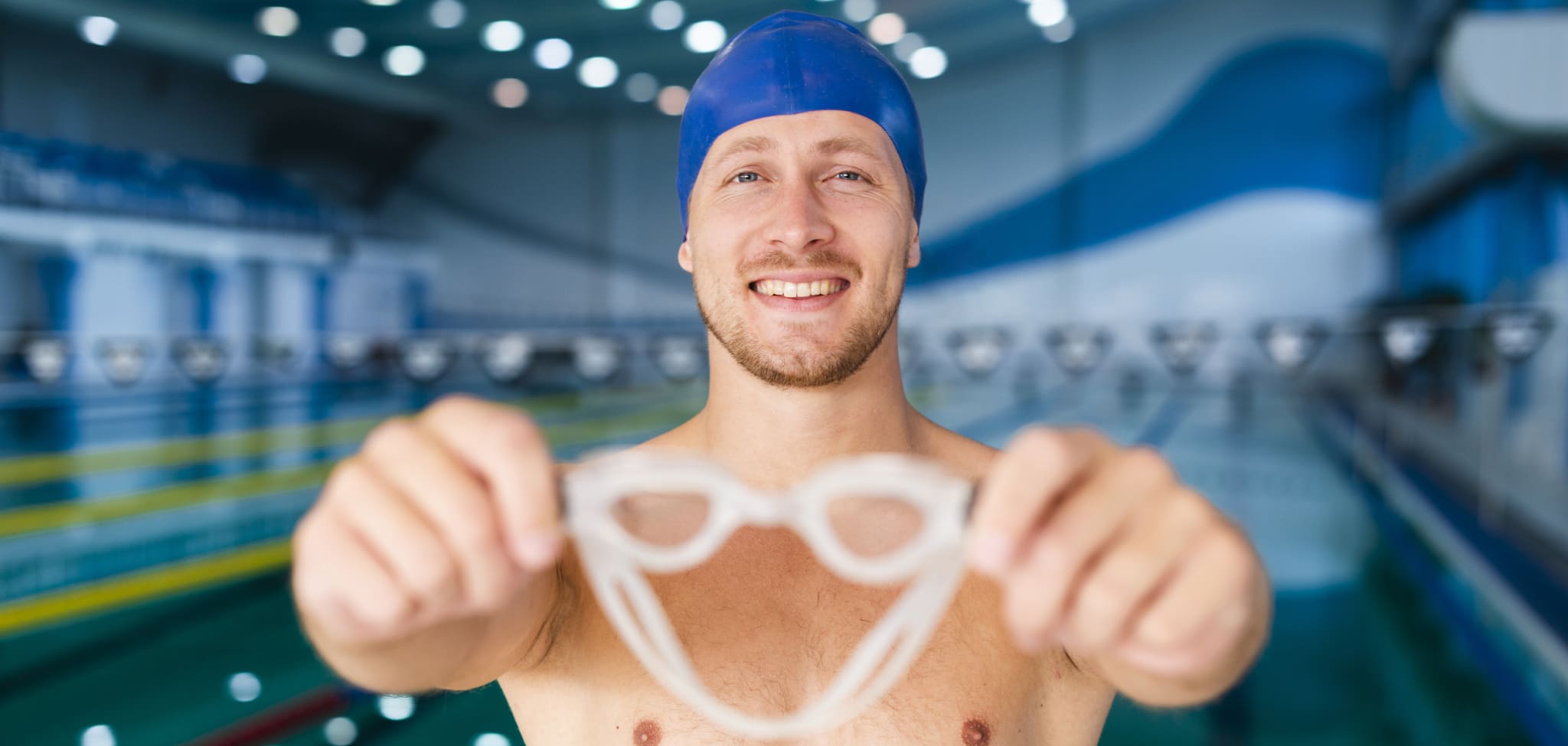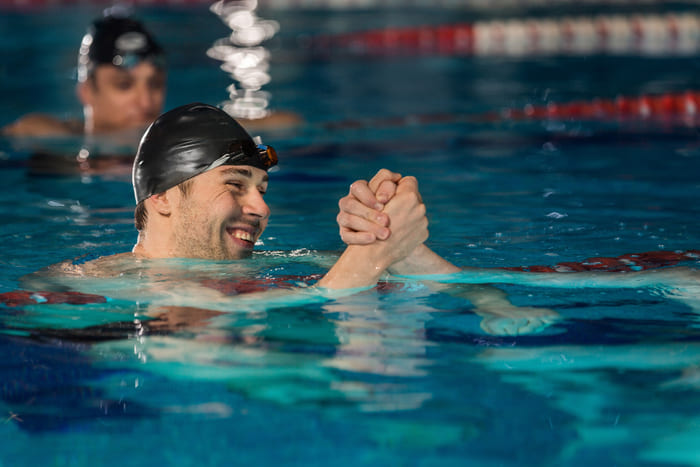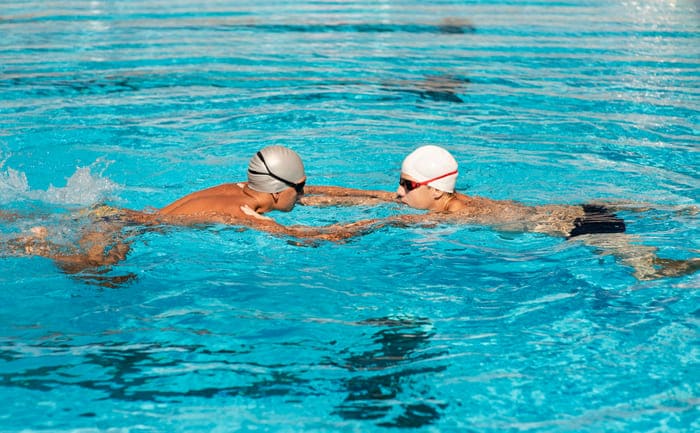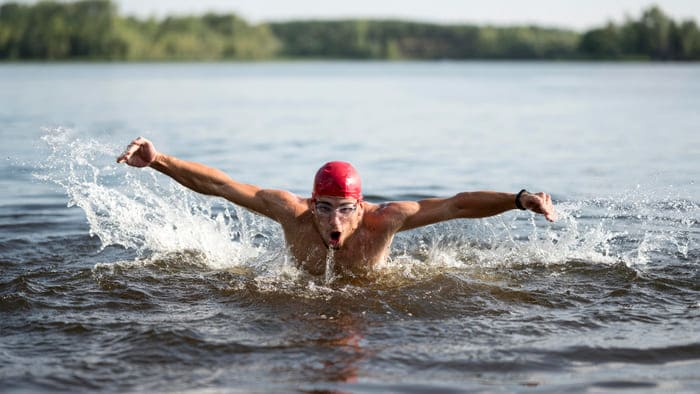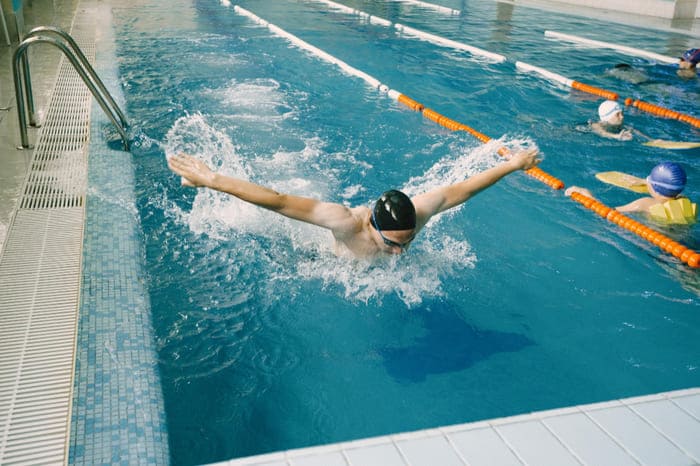Benefits of Swimming Hobby: Why You Should Dive In
Swimming is a low-impact exercise that can provide a full-body workout, improve cardiovascular health, aid in weight loss, and promote mental clarity. In this article, I will dive into the benefits of swimming and show you why it’s one of the best exercises you can add to your fitness routine.
Introduction to Swimming as an Exercise
Swimming is a form of aerobic exercise that involves using your arms, legs, and core to propel your body through water. It is a low-impact exercise that puts minimal stress on your joints, making it an excellent choice for people with arthritis or other joint problems. Swimming can be done in a pool, lake, or ocean, and can be enjoyed by people of all ages and fitness levels.
Benefits of Swimming
Swimming is a popular hobby enjoyed by people of all ages and abilities. It not only provides a fun way to cool off during hot summer days but also offers a range of health benefits. Here are some of the benefits of swimming:
Physical Health
Swimming is a great way to improve physical health. It is a low-impact exercise that can help build strength, improve cardiovascular health, and increase flexibility. Swimming engages all major muscle groups, making it an effective full-body workout. According to the Centers for Disease Control and Prevention (CDC), swimming can help reduce the risk of chronic illnesses such as heart disease, stroke, and type 2 diabetes. Additionally, swimming can help with weight management as it burns calories and can improve metabolism.
Muscle Strength and Tone
Swimming is a great way to build muscle strength and tone. It engages all of the major muscle groups, including your arms, legs, back, and core. swimming can help you build lean muscle mass and improve your overall body composition.
Flexibility and Range of Motion
Swimming can also help improve your flexibility and range of motion. It requires a wide range of motion in your arms and legs, which can help improve your joint mobility. swimming can also help reduce muscle tension and improve your posture.
Weight Management
Swimming is a great way to manage your weight. It is a low-impact exercise that can help you burn calories and lose weight. According to CDC, swimming can help you burn up to 500 calories per hour, depending on your weight and the intensity of your workout. It can also help you maintain a healthy weight by improving your metabolism and reducing your risk of obesity.
Mental Well-Being
Swimming can also have a positive impact on mental well-being. It can help reduce stress, improve mood, and promote relaxation. Swimming is a rhythmic and repetitive activity that can calm the mind and reduce anxiety. The release of endorphins during swimming can also boost mood naturally. Regular swimming can improve sleep patterns, contributing to better overall mental well-being.
Cognitive Function Enhancement
Swimming can also enhance cognitive function. According to a study published in the Journal of Exercise Rehabilitation, swimming can improve cognitive function in older adults. Swimming requires a high level of coordination and focus, which can help to improve brain function. Additionally, swimming can increase blood flow to the brain, which can help to improve memory and concentration.
In summary, swimming is an excellent hobby that provides numerous mental health benefits. Swimming can help reduce stress, improve mood, and enhance cognitive function. If you’re looking for a low-impact workout that can help you feel better both physically and mentally, swimming is an excellent choice.
Longevity and Lifespan Impact
Swimming is a low-impact exercise that provides many physical and mental health benefits. One of the most significant benefits is its impact on longevity and lifespan. According to a study by Northwestern University, regular swimming can add as many as 10 years to your life ACTIVE.
Social and Recreational Aspects
Swimming is not only a great form of exercise but also a social and recreational activity that can be enjoyed by people of all ages. In this section, we will explore the social and recreational aspects of swimming as a hobby.
Community and Friendship
Swimming is a great way to meet new people and make friends. Joining a swimming club or taking swimming lessons can help you connect with people who share the same interests as you. Swimming clubs often organize social events such as pool parties, barbecues, and competitions, which provide opportunities for members to socialize and form friendships.
Swimming can also be a great way to bond with family and friends. Going to the pool or the beach with your loved ones can be a fun and memorable experience. Swimming provides a shared activity that can bring people together and create lasting memories.
Fun and Enjoyment
Swimming is a fun and enjoyable activity that can help you relax and unwind. Whether you are swimming laps, playing water games, or just floating on your back, swimming provides a sense of freedom and weightlessness that can be very therapeutic. Swimming can also be a great stress-reliever, as the repetitive motion and focus on breathing can help calm your mind and reduce anxiety.
In addition to being a fun activity, swimming can also be a source of personal achievement and satisfaction. Setting goals and working towards them can provide a sense of accomplishment and boost your self-confidence. Whether you are working towards improving your technique, increasing your endurance, or mastering a new stroke, swimming provides endless opportunities for personal growth and development.
Overall, swimming is not only a great form of exercise but also a social and recreational activity that can provide a range of benefits for your physical and mental well-being. So, grab your swimsuit and jump in the pool – the water is waiting for you!
Learning to Swim
Learning to swim is an essential part of enjoying swimming as a hobby. Whether you are a beginner or just want to improve your skills, there are several ways to learn how to swim. In this section, we will discuss some of the most effective ways to learn how to swim.
Swimming Lessons
One of the most popular ways to learn how to swim is by taking swimming lessons. Swimming lessons are offered at most community pools, gyms, and recreation centers. These lessons are usually taught by certified swimming instructors who are trained to teach people of all ages and skill levels.
Swimming lessons provide a structured and safe environment for beginners to learn how to swim. Instructors will teach you the basics of swimming, such as floating, kicking, and breathing. They will also teach you different swimming strokes, such as freestyle, backstroke, breaststroke, and butterfly.
Self-Learning Resources
If you prefer to learn how to swim on your own, there are several self-learning resources available. These resources include books, videos, and online tutorials. These resources are designed to help beginners learn the basics of swimming and improve their skills.
Books and videos provide step-by-step instructions on how to swim, while online tutorials offer interactive lessons that you can follow at your own pace. These resources are a great way to supplement your swimming lessons or to learn how to swim if you cannot afford swimming lessons.
Practice Tips
Practice is essential to improving your swimming skills. The more you practice, the better you will become. Here are some tips to help you practice swimming:
- Practice regularly: Try to swim at least once or twice a week to maintain your swimming skills.
- Set goals: Set realistic goals for yourself, such as swimming a certain distance or time. This will help you stay motivated and focused.
- Use equipment: Use equipment such as kickboards, pull buoys, and paddles to help improve your swimming technique.
- Join a swim club: Joining a swim club is a great way to meet other swimmers and get feedback on your technique.
In conclusion, Whether you choose to take swimming lessons or learn on your own, the most important thing is to practice regularly and set realistic goals for yourself. With time and practice, you can become a confident and skilled swimmer.
Swimming Safety
Swimming is a fun and healthy hobby, but it is important to prioritize safety while in the water. Here are some tips to help ensure a safe swimming experience.
Understanding Water Safety
Before entering the water, it is important to understand water safety. This includes knowing how to swim and being aware of the potential dangers of swimming in different bodies of water such as lakes, oceans, and pools. It is also important to be aware of the weather conditions and any potential hazards such as rip currents or strong waves.
In addition, it is important to follow basic safety rules such as never swimming alone, always having a designated lifeguard or swim buddy, and avoiding alcohol and drugs while swimming. It is also important to be aware of any medical conditions that may affect swimming ability, such as asthma or heart conditions.
First Aid and Lifesaving Skills
In the event of an emergency, it is crucial to have basic first aid and lifesaving skills. This includes knowing how to perform CPR and rescue breathing, as well as being able to recognize the signs of drowning and other water-related emergencies.
It is also important to have access to appropriate safety equipment such as life jackets, rescue tubes, and first aid kits. Additionally, it is important to have a plan in place for emergencies and to communicate this plan with others before entering the water.
By prioritizing water safety and being prepared for emergencies, swimmers can enjoy a safe and enjoyable swimming experience.
Competitive Swimming
Competitive swimming is a popular activity for those who enjoy the thrill of competition. It is a sport that requires dedication, hard work, and perseverance. There are many different levels of competition, from local meets to international events. In this section, we will explore the different aspects of competitive swimming.
Swim Meets
Swim meets are events where swimmers compete against each other in various races. They can be local, regional, national, or international events. Swimmers are typically grouped by age and gender, and races are held in a variety of distances and strokes. Some of the most popular events include the freestyle, backstroke, breaststroke, and butterfly.
Swimming Clubs
Swimming clubs are organizations that provide training and support for competitive swimmers. They are typically run by coaches and volunteers who are passionate about the sport. Swimming clubs offer a variety of programs, from beginner lessons to elite training for Olympic hopefuls. They are a great way to meet other swimmers and to get involved in the swimming community. Some popular swimming clubs include USA Swimming and Masters Swimming.
Professional Swimming
Professional swimming is a career path for those who have reached the highest level of competition. Professional swimmers compete in international events and are often sponsored by companies or organizations. They may also receive endorsements and appearance fees. Professional swimmers are typically highly trained and dedicated athletes who have spent years honing their skills.
In conclusion, competitive swimming is a challenging and rewarding activity that requires dedication, hard work, and perseverance. Whether you are a beginner or an elite athlete, there are many opportunities to get involved in the swimming community. From local swim meets to international events, there is something for everyone in the world of competitive swimming.
Swimming Locations
Swimming is a versatile hobby that can be done in a variety of locations. Here are some popular swimming locations:
Pools
Pools are a popular choice for swimmers as they provide a controlled environment for swimming. They are available in both indoor and outdoor settings, making them a year-round option for swimmers. Indoor pools are generally heated and can be used during the colder months, while outdoor pools are a great option during the summer months. Some pools offer additional amenities such as diving boards, water slides, and lap lanes.
Open Water Locations
Open water locations such as lakes, rivers, and oceans offer a unique swimming experience for swimmers. These locations can provide a more challenging environment for swimmers due to factors such as currents, waves, and temperature changes. It is important to be aware of the risks associated with open water swimming and to take necessary precautions such as swimming with a buddy, wearing a wetsuit, and checking weather conditions before swimming.
Indoor vs Outdoor
Indoor and outdoor swimming locations each have their own advantages and disadvantages. Indoor pools provide a controlled environment and can be used year-round, while outdoor pools offer a more natural setting and are a great option during the summer months. Open water locations offer a unique swimming experience but can be more challenging due to factors such as currents and temperature changes. Ultimately, the choice of swimming location depends on personal preference and the type of swimming experience one is looking for.
Swimming Etiquette
When it comes to swimming as a hobby, it is important to follow proper etiquette to ensure a safe and enjoyable experience for everyone. Here are some tips for good swimming etiquette:
Lane Sharing
When sharing a lane with other swimmers, it is important to follow some basic rules to avoid collisions and frustration. Firstly, always choose a lane that fits your speed. If you are unsure about your speed, observe the other swimmers in the pool before choosing a lane. Secondly, before entering the water, it is advisable to communicate with the other swimmers in your lane. You can politely ask if it is okay to share the lane and discuss how you will share the space.
Once in the water, it is important to maintain a safe distance from the other swimmers. Always swim on one side of the lane and avoid crossing the center line. If you need to pass another swimmer, do so only when it is safe and appropriate. Always communicate with the other swimmers before attempting to pass.
Hygiene Practices
Maintaining good hygiene practices is crucial for ensuring a safe and healthy swimming experience. Firstly, it is imperative to shower before entering the pool to eliminate any dirt, sweat, or oils from your body. Additionally, refrain from swimming if you have an open wound or any contagious skin condition. In such cases, it is advisable to stay out of the pool until the ailment has healed or cleared.
Moreover, it is important to foster a sense of communal respect and avoid discussing personal bodily functions. While inadvertent urination can occur in pools, it is not accurate to claim that everyone engages in this behavior. Encouraging proper hygiene etiquette and emphasizing the importance of cleanliness in shared swimming spaces contributes to a more enjoyable and health-conscious environment.
By following these basic rules of swimming etiquette, you can ensure a safe and enjoyable experience for yourself and others in the pool.
Swimming Workouts
Swimming is an excellent way to stay fit and healthy. It is a low-impact exercise that can be done by people of all ages and fitness levels. Whether you are a beginner or an experienced swimmer, there are many different swimming workouts that you can do to improve your swimming skills and overall fitness.
Endurance Training
Endurance training is an essential aspect of swimming. It helps to improve cardiovascular fitness and build endurance. A typical endurance training workout involves swimming for an extended period, usually around 45-60 minutes, at a moderate pace. This type of workout helps to build endurance and improve overall fitness levels.
To make endurance training more interesting, one can try variations like the Full-Body Medley Workout, which involves swimming different strokes in a single workout, or the Tabata Swim Workout, which is a high-intensity interval training workout that can be completed in just 30 minutes.
Speed Training
Speed training is another important aspect of swimming. It helps to improve overall speed and performance in the water. A typical speed training workout involves swimming short distances at a high intensity with rest periods in between.
One can try variations like the 50s Sprint Set, which involves swimming 50-meter sprints with rest periods in between, or the Pyramid Set, which involves swimming increasing and decreasing distances at a high intensity.
Strength Workouts
Strength training is an essential aspect of swimming that helps to build muscle and improve overall performance in the water. A typical strength training workout involves using resistance equipment like pull buoys, paddles, and resistance bands to increase resistance and build strength.
One can try variations like the Pull Set, which involves swimming with a pull buoy to increase upper body strength, or the Paddle Set, which involves swimming with paddles to increase hand and arm strength.
Swimming workouts are an excellent way to improve overall fitness levels and build endurance, speed, and strength in the water. With a variety of workouts available, there is something for everyone, regardless of their fitness level or experience.
Frequently Asked Questions
What are the key health benefits of engaging in swimming regularly?
Swimming is an excellent form of exercise that offers numerous health benefits. Swimming regularly can help you improve your cardiovascular health, build strength and endurance, and maintain a healthy weight. Moreover, swimming is a low-impact exercise that is gentle on your joints, making it an ideal workout for people of all ages and fitness levels.
How can swimming contribute to mental well-being?
Swimming is a great stress-reliever and can help you relax and unwind after a long day. Swimming can also improve your mood by releasing endorphins, which are natural chemicals that make you feel good. Moreover, swimming can help you sleep better, which is essential for good mental health.
In what ways does swimming affect physical body composition?
Swimming is an excellent way to build lean muscle mass and tone your body. Swimming engages all of your major muscle groups, including your arms, legs, back, and core, helping you to build strength and endurance. Additionally, swimming can help you burn calories and reduce body fat, which can help you maintain a healthy weight.
What advantages does swimming offer for cardiovascular health?
Swimming is an excellent cardiovascular exercise that can help you improve your heart health. Swimming can help you lower your blood pressure, reduce your risk of heart disease, and improve your circulation. Additionally, swimming can help you increase your lung capacity, which can help you breathe more efficiently.
How does swimming as a hobby positively impact overall lifestyle?
Swimming is a great way to stay active and healthy, and it can have a positive impact on your overall lifestyle. Swimming can help you reduce stress, improve your mood, and boost your energy levels. Moreover, swimming is a social activity that can help you meet new people and make new friends.
What are the considerations for adults starting swimming later in life?
If you are an adult starting swimming later in life, there are some important considerations to keep in mind. It is important to start slowly and gradually increase the intensity and duration of your workouts. Additionally, it is important to consult with your doctor before starting any new exercise program, especially if you have any pre-existing medical conditions. Finally, it is important to find a qualified swimming instructor who can help you learn proper technique and form to avoid injury.
LEARN & GROW CORNER
Baseball for Beginners
Baseball for Beginners: A Comprehensive Guide to the Basics Baseball is one of the most popular sports in the United States, enjoyed by millions of people of all ages. It's a game that requires [...]
Collecting Paper Currency
Collecting Paper Currency Hobby: Tips and Tricks for Building a Unique Collection Are you interested in the world of paper currency collecting? If so, you're in for a treat. Collecting paper money is a [...]
Coin Collecting Hobby
Coin Collecting Hobby: A Guide to Starting Your Collection If you've ever found yourself fascinated by the intricate designs and historical significance of coins, you might want to consider starting a coin collecting hobby. [...]
The Stamp Collecting
The Stamp Collecting: A Comprehensive Guide Stamp collecting is a fascinating hobby that has been enjoyed by people all over the world for over a century. Whether you're a seasoned collector or a newcomer [...]
ABC Gardening Hobby
ABC Gardening Hobby: Tips and Tricks for Beginners If you're looking for a rewarding and enjoyable hobby, gardening might be the perfect fit for you. A B C Gardening is a beginner-friendly approach to [...]

